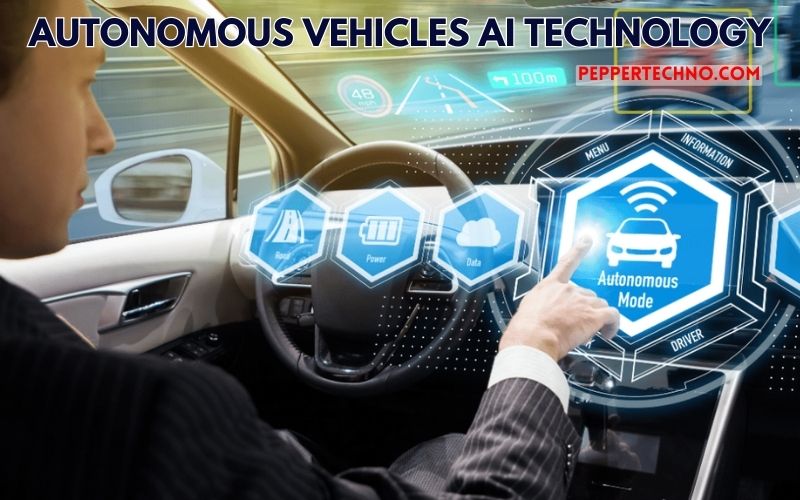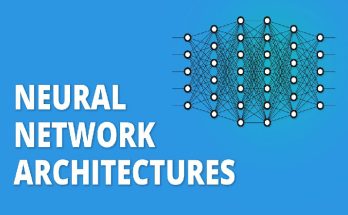Revolutionizing Transportation: Autonomous Vehicles AI Technology
The dawn of autonomous vehicles (AVs) heralds a new era in transportation, promising to redefine mobility as we know it. At the core of this transformation lies artificial intelligence (AI) technology, empowering vehicles to navigate and interact with the world around them autonomously. This blog post explores Autonomous Vehicles AI Technology, the pivotal role of AI in their development, and the profound impact they are poised to have on transportation and society.

What are Autonomous Vehicles?
Autonomous vehicles, also known as self-driving cars, are vehicles that can navigate and operate without human input. These vehicles use a combination of sensors, cameras, and AI algorithms to perceive their environment and make decisions accordingly. AVs have the potential to significantly reduce accidents, improve traffic flow, and increase accessibility for people with disabilities.
The Evolution of Autonomous Vehicles
The concept of autonomous vehicles traces its roots back to the early 20th century, with visionary thinkers imagining a future where vehicles could operate without human intervention. Significant progress was made in the 2000s, marked by the development of prototype vehicles by companies like Google and Tesla. Today, AVs are equipped with advanced sensor arrays, including lidar, radar, and cameras, coupled with sophisticated AI algorithms that enable them to perceive their environment and make real-time decisions.
How AI Powers Autonomous Vehicles
AI plays a central role in enabling AVs to navigate complex environments safely and efficiently. Machine learning algorithms, particularly deep learning neural networks, process data from sensors to recognize objects, pedestrians, and road signs. These algorithms continuously learn from their experiences, improving their decision-making capabilities over time. Reinforcement learning is also used to train AVs to handle unforeseen scenarios, ensuring adaptability in diverse driving conditions.
Benefits of Autonomous Vehicles
The adoption of AVs promises a host of benefits, chief among them being enhanced road safety. By eliminating human error, which is a leading cause of accidents, AVs have the potential to save thousands of lives each year. Additionally, AVs can significantly reduce traffic congestion by optimizing traffic flow and reducing unnecessary stops and starts. This not only saves time for commuters but also reduces fuel consumption and emissions, contributing to a cleaner environment.
How AI is Revolutionizing Autonomous Vehicles
Enhanced Perception: AI allows AVs to perceive their environment with a level of detail and accuracy that surpasses human capabilities. Through the use of sensors such as LiDAR, radar, and cameras, AVs can detect objects, pedestrians, and other vehicles in real-time, enabling them to make informed decisions about their surroundings.
This enhanced perception is crucial for AVs to navigate complex environments such as city streets and highways safely. AI algorithms process the data collected by sensors to identify objects, predict their movements, and plan a safe path for the vehicle.
Decision Making: AI plays a crucial role in the decision-making process of AVs. When faced with a complex traffic scenario, AVs rely on AI algorithms to analyze the situation, predict the outcomes of different actions, and choose the best course of action.
For example, if a pedestrian suddenly crosses the road in front of an AV, the vehicle’s AI system can quickly analyze the situation and decide whether to brake, swerve, or take evasive action to avoid a collision.
Adaptability: One of the key advantages of AI in AVs is its adaptability to changing conditions. AVs can continuously learn from their experiences on the road, improving their decision-making abilities over time.
This adaptability is crucial for AVs to navigate unpredictable scenarios, such as construction zones, detours, or adverse weather conditions. AI algorithms can quickly adjust to these changes, ensuring the safety and efficiency of the vehicle’s operation.
Challenges and Future Directions
While AI has the potential to revolutionize AVs, several challenges remain. Ensuring the safety and reliability of AI systems, addressing ethical and regulatory issues, and integrating AVs into existing transportation infrastructure are key challenges that need to be addressed.
Despite these challenges, the future of AVs looks promising. As AI technology continues to advance, AVs will become safer, more efficient, and more accessible, transforming the way we think about transportation.
Impact on Transportation and Society
The widespread adoption of AVs is expected to have far-reaching implications for transportation and society. In urban areas, AVs could revolutionize public transportation, offering on-demand, efficient, and accessible mobility solutions. This could lead to a reduction in private car ownership, freeing up valuable urban space currently used for parking. However, the rise of AVs could also lead to job displacement in industries reliant on human drivers, necessitating retraining and reskilling programs to mitigate the impact on the workforce.
The Future of Autonomous Vehicles
Looking ahead, the future of autonomous vehicles is brimming with possibilities. Continued advancements in AI technology, coupled with improvements in sensor technology and connectivity, will further enhance the capabilities of AVs. It is envisioned that AVs will not only become ubiquitous on our roads but also integrate seamlessly into the fabric of smart cities, contributing to a more efficient and sustainable transportation ecosystem.
Conclusion:
Autonomous vehicles powered by AI technology represent a transformative leap forward in transportation. With the potential to enhance safety, reduce congestion, and improve accessibility, AVs offer a glimpse into a future where mobility is not just automated but also intelligent. As we navigate the complexities and challenges of integrating AVs into our transportation systems, it is essential to embrace these innovations with a forward-looking perspective, leveraging their potential to create a more efficient, safe, and sustainable future for all.



